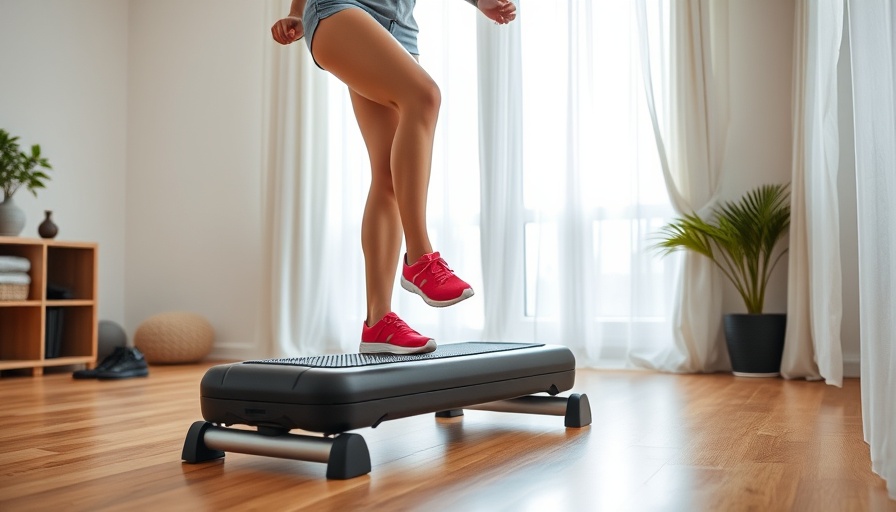
Discover the Power of Bodyweight Training: No Equipment Needed
High-Intensity Interval Training, often referred to as HIIT, has become increasingly popular for a good reason—it's effective, fast, and adaptable to any environment. Patrice's latest workout video, "Intense Bodyweight Strength with HIIT Circuits: Balanced Moves, No Repeat Format, Steady Flow," exemplifies how you can harness the benefits of HIIT without the need for gym equipment. This workout is designed not only for those who wish to sculpt their bodies but also for anyone looking to squeeze fitness into a busy schedule.
In 'Intense Bodyweight Strength with HIIT Circuits: Balanced Moves, No Repeat Format, Steady Flow', the discussion dives into engaging bodyweight workouts, exploring key insights that sparked deeper analysis on our end.
Why Is Bodyweight Training Beneficial?
The beauty of bodyweight training lies in its accessibility. You can perform exercises almost anywhere—at home, in the park, or even your hotel room during travel. This makes it a fantastic option for members of the SDA faith community who may be traveling or have limited time to dedicate to exercise. Unlike traditional strength training, which may require sophisticated equipment, bodyweight exercises rely on the weight of your own body, making them universally available.
Create Your Own HIIT Circuit: Key Exercises from Patrice
In the workout led by Patrice, 25 different exercises flow seamlessly, each designed to target multiple muscle groups while elevating your heart rate. The no-repeat format keeps participants engaged and challenged throughout the workout. Exercises include a variety of movements such as squat jumps and plank to toe taps, ensuring that the session remains dynamic and effective.
Here’s a sneak peek of some exercises included:
- Yogi Push-Ups: A combination of stretching and strength that highlights flexibility while building upper body strength.
- Reverse Lunge to Hop: Engages the legs and core, promoting stability while also ramping up your heart rate.
- Diamond Push-Ups: A great exercise for targeting the triceps, demonstrating that you can enhance muscle definition without traditional weights.
How to Stay Motivated During Your Workout
The challenge of a HIIT workout can be daunting, but motivation is key. Patrice encourages participants throughout the session, reminding them to breathe and maintain a positive mindset. This encouragement fosters a sense of community, making you feel as though you’re not alone in your fitness journey!
In the SDA faith community, this principle of support can extend into our everyday lives. As we seek to uplift and encourage one another, we can apply this same empathy and motivation to our health and wellness endeavors.
The Science Behind HIIT: Why It Works
Research from the Office of Disease Prevention and Health Promotion emphasizes the health benefits of regular physical activity, particularly in a HIIT format. The effectiveness of HIIT is rooted in its ability to increase both aerobic and anaerobic fitness levels in a shorter time than traditional endurance training. This makes it an ideal choice for busy individuals looking to maximize their workout time.
Take Control of Your Fitness Journey
With the rise of digital fitness resources, such as the video library at Fitness Blender, more people can take charge of their health. Online workouts delivered by experienced instructors provide the expert guidance needed to ensure exercises are performed correctly and safely.
For SDA church members, embracing this flexible approach to fitness aligns with a holistic view of health that encompasses body, mind, and spirit. Take advantage of the resources available to you and find strength in accountability both within your local community and online.
Your Next Steps: Implementing HIIT
If you’re ready to dive into bodyweight training, start by setting a routine that includes a few HIIT sessions each week. Customize your workouts based on personal fitness levels and preferences. Starting with shorter sessions could help build confidence and endurance over time. Additionally, involving friends or family members can make your fitness journey even more enjoyable.
Final Thoughts: Embrace the Challenge
Bodyweight HIIT workouts present an incredible opportunity for anyone, especially members of the SDA community, to enhance their physical health without added stress about equipment or extensive time commitments. As Patrice reminds us, even short, intense workouts can yield significant results. Don’t hesitate to explore these workouts and see how they can fit into your life, nurturing not just your physical health, but also strengthening your resolve and faith!
Are you inspired to take on a new bodyweight workout routine? Gather your friends and dive into a HIIT session - you might just unlock a hidden passion for fitness while praying for motivation along the way!
 Add Row
Add Row  Add
Add 




Write A Comment